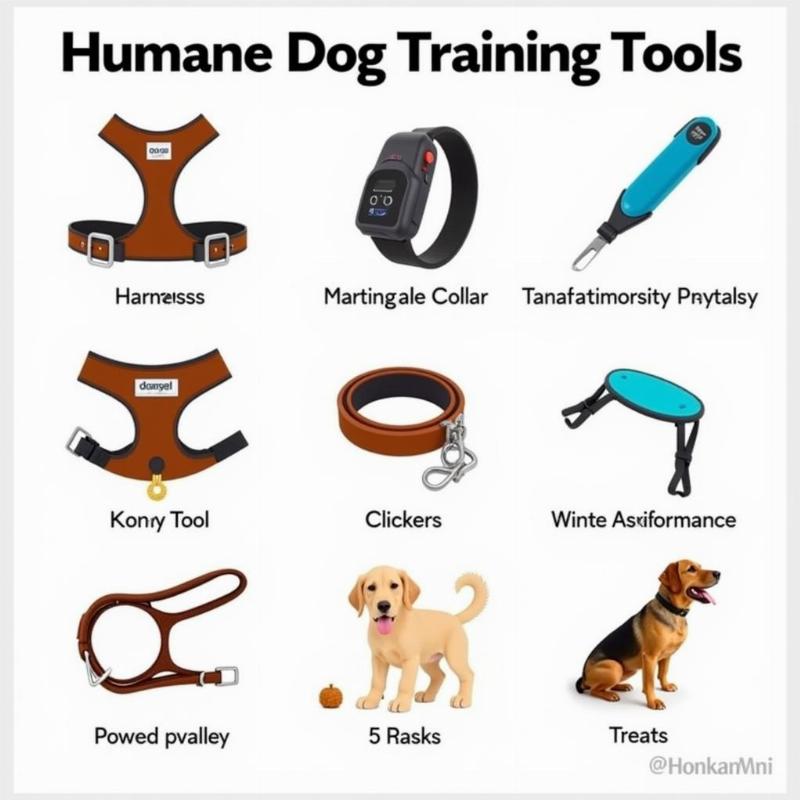Spiked collars for dog training are a controversial topic. While some owners believe they’re effective tools for controlling aggressive or strong-willed dogs, others worry about potential harm and unnecessary discomfort. This article will delve into the facts about spiked collars, exploring their uses, potential risks, and alternatives for effective training. We’ll explore the responsible use of spiked collars within the context of American pet care standards and provide insights to help you make informed decisions for your canine companion.
Understanding Spiked Collars and Their Intended Use
Originally designed for working breeds with thick fur, like Doberman Pinschers and Rottweilers, spiked collars offered protection during tasks like herding and guarding livestock. The spikes deterred predators from attacking vulnerable areas on the dog’s neck. Today, their function has shifted primarily towards training and behavior modification, particularly for dogs that pull excessively on the leash or display aggression. However, their efficacy and ethical implications are subjects of ongoing debate.
Potential Risks and Concerns Associated with Spiked Collars
While some view spiked collars as a quick fix for behavioral issues, it’s crucial to understand the potential risks. Incorrect usage can lead to physical injuries, including punctures, lacerations, and damage to the trachea or esophagus. Beyond physical harm, spiked collars can cause psychological distress, anxiety, and increased aggression if used improperly. The American Kennel Club (AKC) advises caution when using spiked collars and emphasizes the importance of proper fit and training techniques.
Humane and Effective Alternatives to Spiked Collars
Fortunately, many humane and effective alternatives exist for addressing unwanted behaviors. Positive reinforcement training, using rewards and praise, can motivate dogs to learn desirable behaviors without resorting to aversive methods. Martingale collars offer more control than standard collars without the risks of spiked collars. Harnesses distribute pressure evenly across the chest, minimizing strain on the neck. Consulting with a certified professional dog trainer can help you identify the best tools and techniques for your dog’s specific needs and temperament.
 Dog Training Alternatives to Spiked Collars
Dog Training Alternatives to Spiked Collars
Proper Usage and Fitting of Spiked Collars if Chosen
If, after careful consideration and consultation with a professional trainer, you decide to use a spiked collar, proper fit and usage are paramount. The collar should fit snugly without restricting breathing or movement. The spikes should rest flat against the dog’s neck, never digging in. Using the collar for short periods, only during training sessions, is essential. It’s crucial to remember that spiked collars are not a substitute for proper training and socialization.
Conclusion
Spiked collars for dog training require careful consideration. While they can serve a purpose in specific situations, their potential for harm necessitates cautious use under the guidance of a professional. Exploring and implementing humane and effective alternatives like positive reinforcement, martingale collars, or harnesses is often a safer and more beneficial approach to training. Remember, prioritizing your dog’s well-being and choosing methods that build trust and positive relationships are crucial for a happy and well-behaved companion.
FAQ
- Are spiked collars recommended for all dogs? No, spiked collars are not suitable for all dogs and should only be considered in specific situations with guidance from a professional trainer.
- Can spiked collars cause harm to my dog? Yes, improper use of spiked collars can cause physical and psychological harm.
- What are some alternatives to spiked collars? Harnesses, martingale collars, and positive reinforcement training are effective alternatives.
- Do I need professional guidance when using a spiked collar? Yes, consulting a certified professional dog trainer is highly recommended when considering a spiked collar.
- Are there breed-specific considerations for using a spiked collar? Yes, the original purpose of the spiked collar was to protect working breeds. Consult a professional to determine if it’s appropriate for your breed.
- Is a spiked collar a substitute for training? No, a spiked collar is not a substitute for proper training and socialization.
- Where can I find a qualified dog trainer? The American Kennel Club (AKC) and the Certification Council for Professional Dog Trainers (CCPDT) offer resources for finding certified trainers.
Related Articles on Beautdogs.us:
collar with spikes for dogs
best dog harness for doberman
genuine leather spiked dog collar
dog harness and collar set
Beautdogs.us is your premier resource for all things dog-related in the United States. We offer expert advice on dog breeds, care, training, and product recommendations. Whether you’re a seasoned dog owner or just starting your journey, Beautdogs.us is your trusted source for comprehensive and engaging information. Contact us today for any questions or inquiries! Email: [email protected], Phone: +1 501-555-7529.